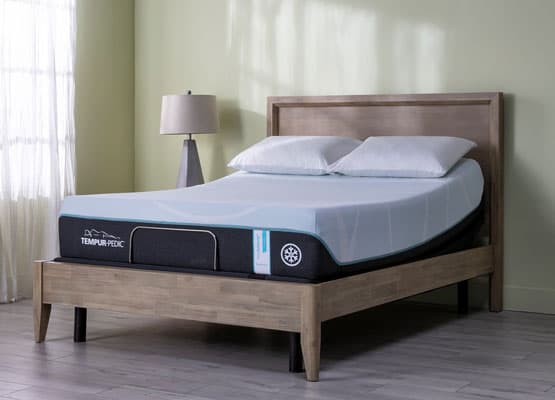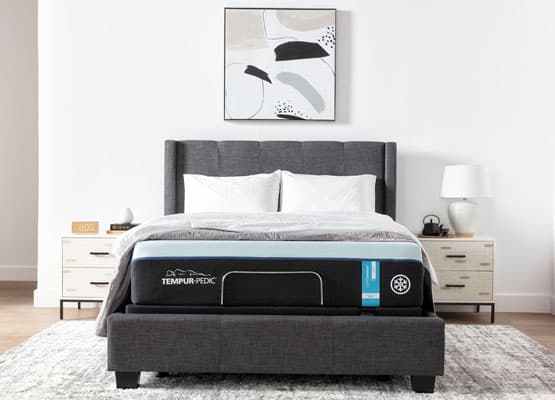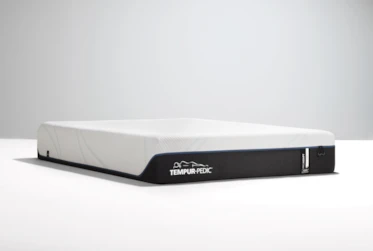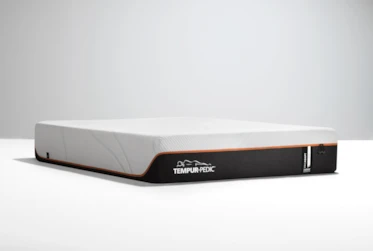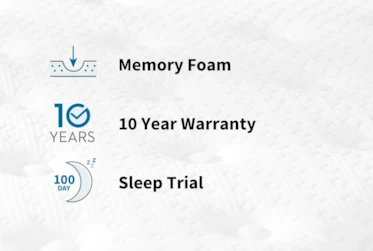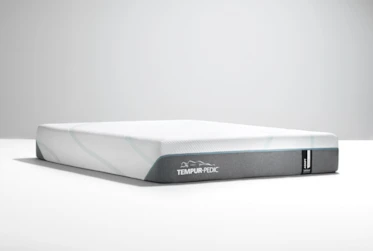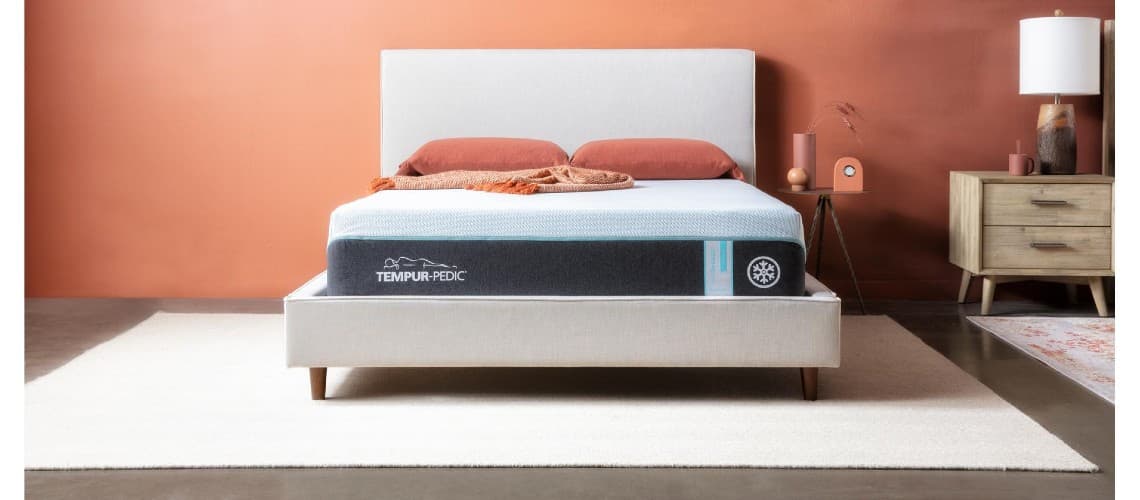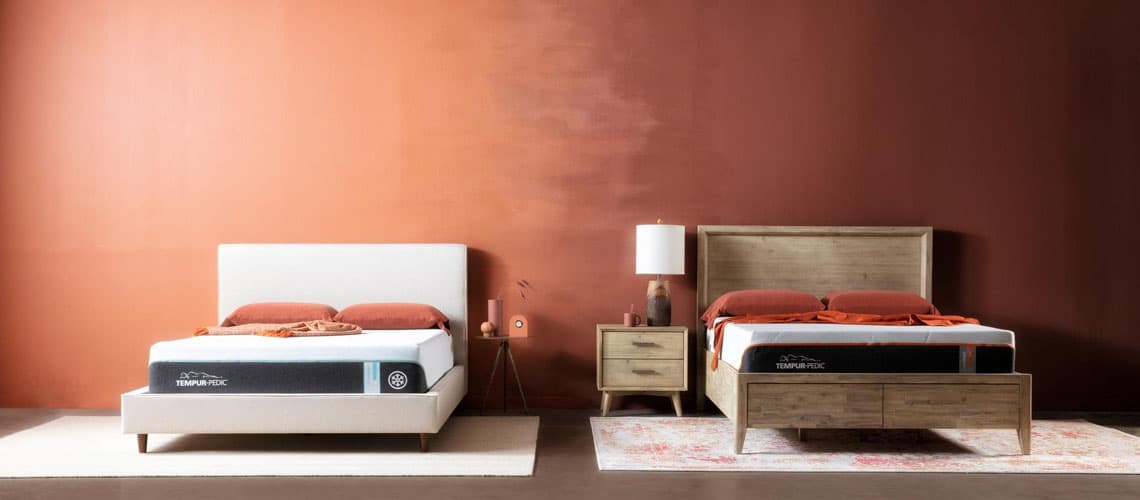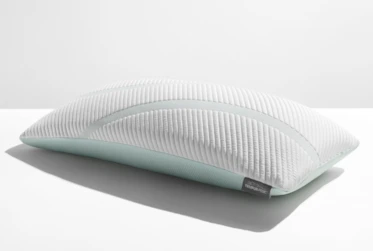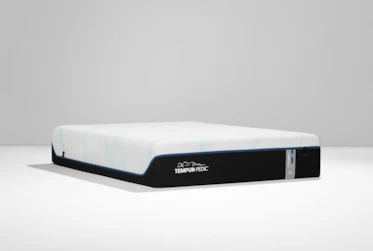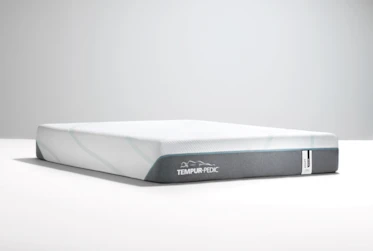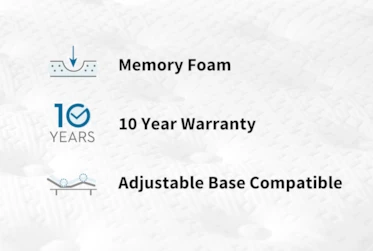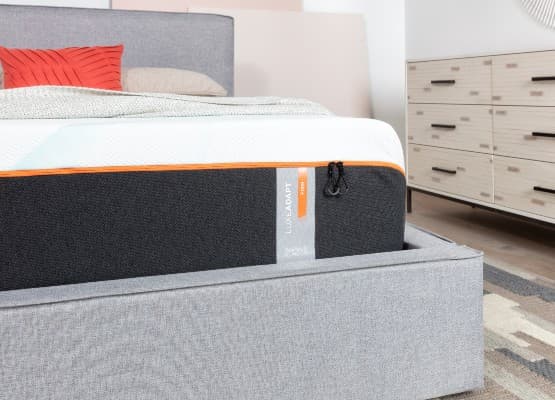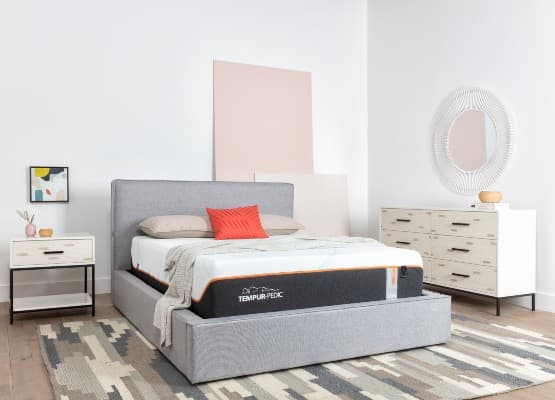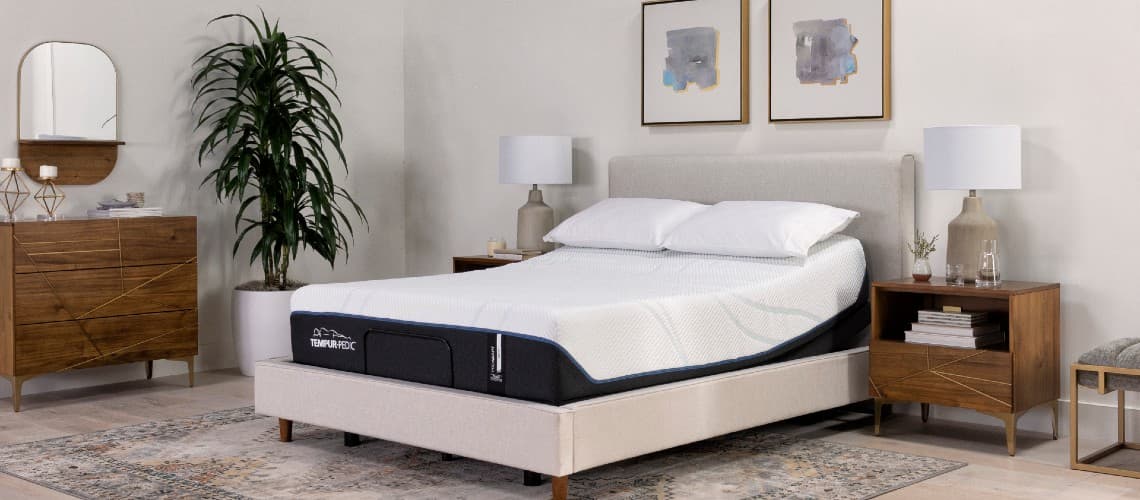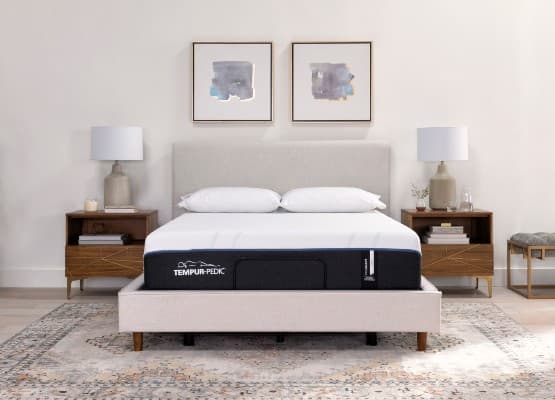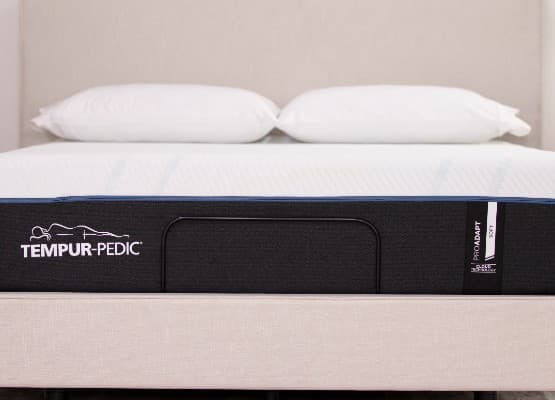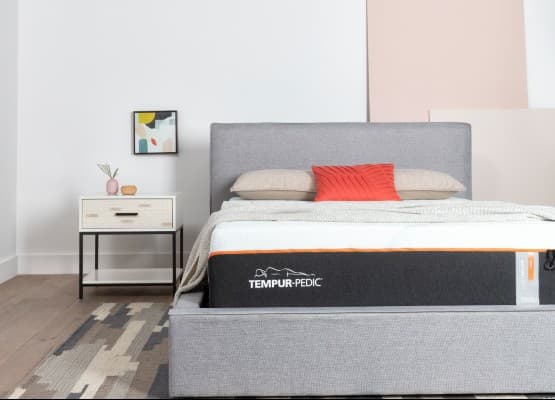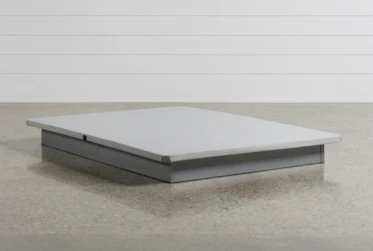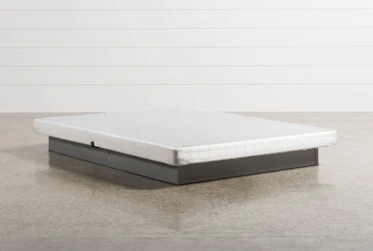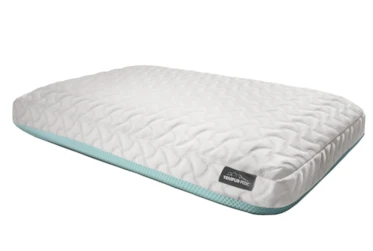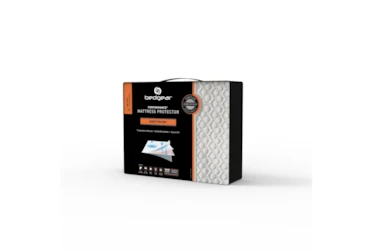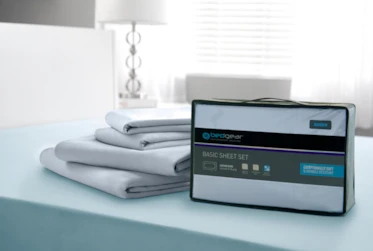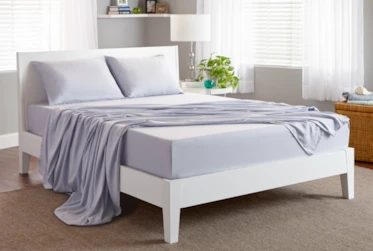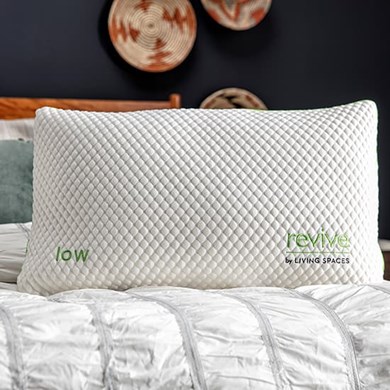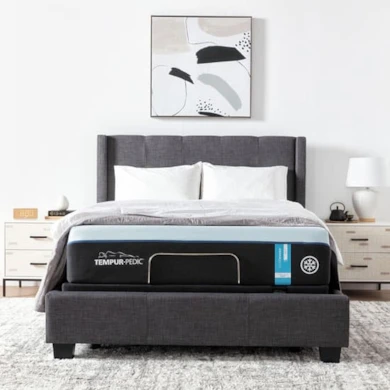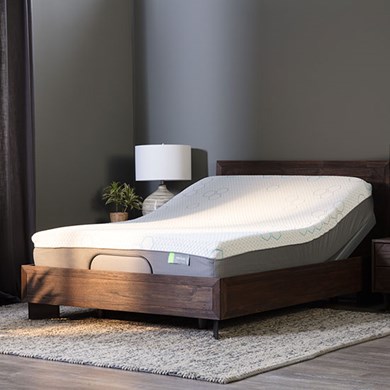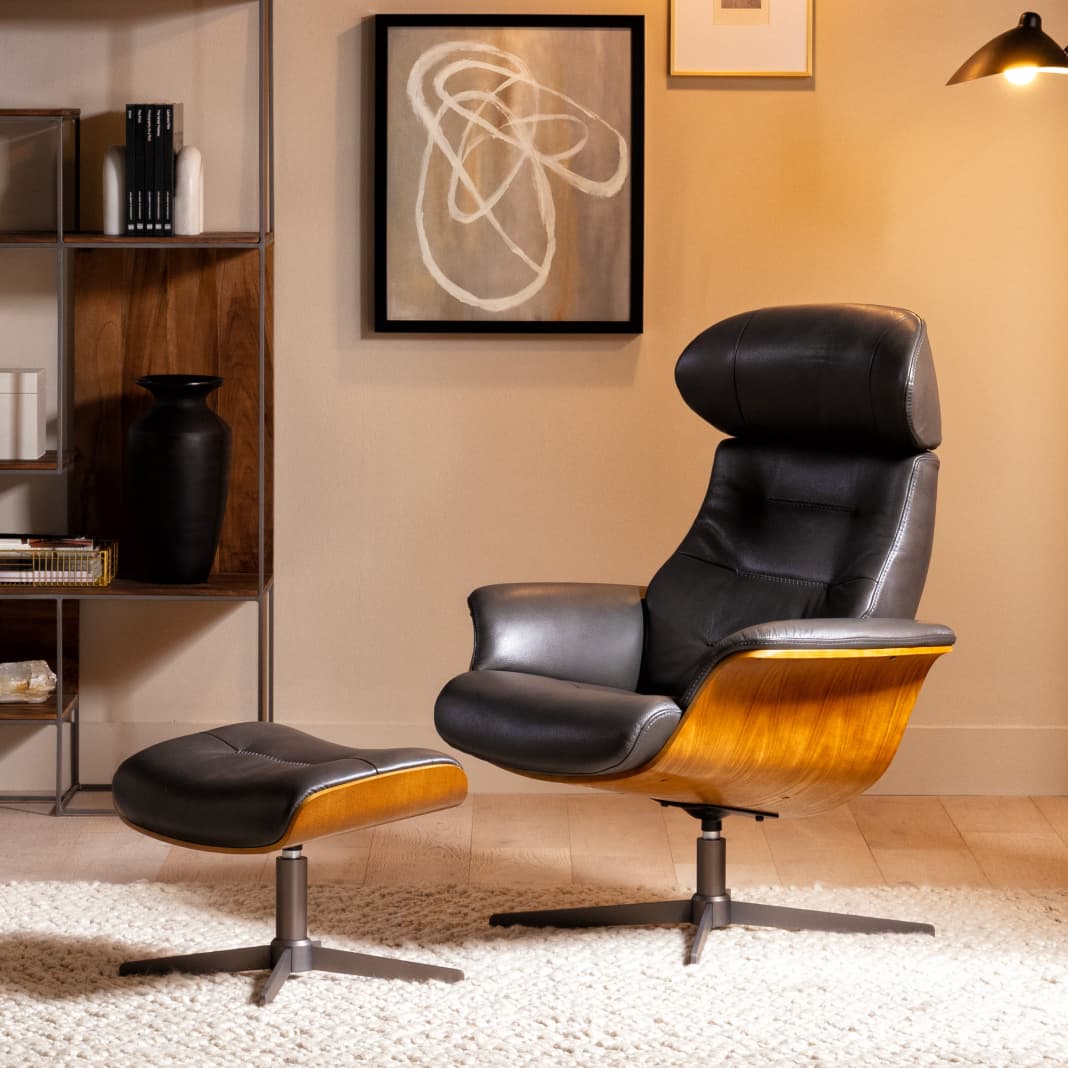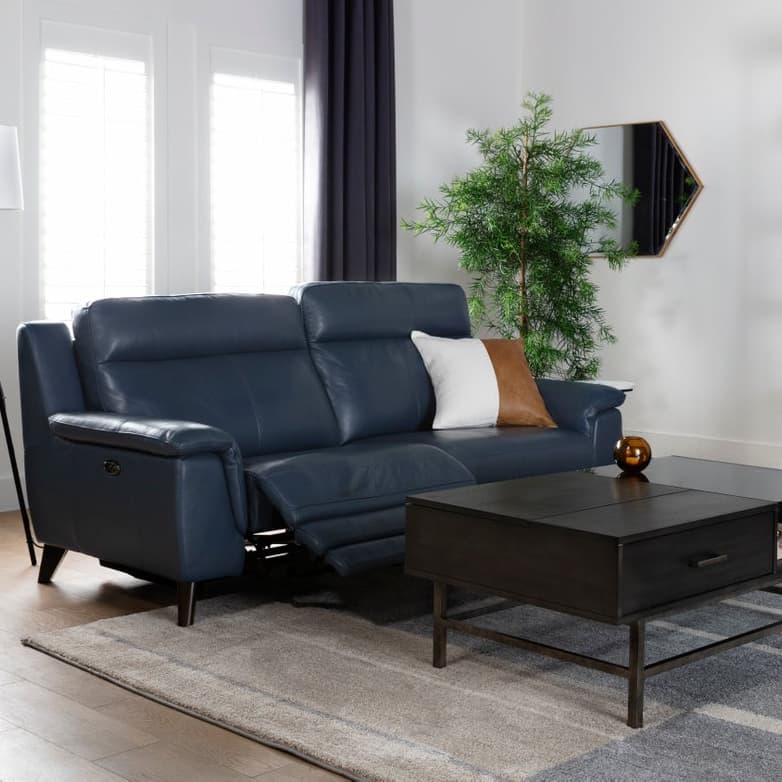Is a Tempur-Pedic Memory Foam Mattress Worth It?
What’s Inside a Tempur-Pedic Memory Foam Mattress?
The driving force behind the comfort of Tempur-Pedic is TEMPUR foam, a memory foam originally developed for NASA to help keep astronauts comfortable and protected during missions to space; slow-moving foam cells helped absorb the shock of take-off.
How Long Does a Tempur-Pedic Mattress Last?
A Tempur-Pedic mattress is designed to last for 10 to 15 years. However, the lifespan can change depending on how often the mattress is used (do you spend all day in bed, or just night?), how it's used (do you eat in bed?), type and quality of mattress foundation and how much weight is placed on the bed (do you share your bed with a partner?). Today, the TEMPUR material is adapted for long-term use. Just as with its NASA origins, everyone – regardless of whether or not you’re in a space shuttle! – can experience what it’s like to sleep on a bed that responds and adjusts to your exact temperature, shape and weight. Here are three properties that make the Tempur-Pedic mattress a quality purchase designed to keep you as comfortable as possible for the next decade!
The first property of Tempur-Pedic memory foam is temperature-responsiveness: From a breezy, open-cell design to moisture-wicking technologies, Tempur-Pedic memory foam mattresses are designed to draw heat and humidity away from you while you sleep.
The second property of Tempur-Pedic memory foam is shape-responsiveness: TEMPUR material slowly conforms to your exact shape for flawless support and comfort.
The third property of Tempur-Pedic memory foam is weight-responsiveness: Wouldn’t it be great if you never again had to worry about whether or not your mattress was designed to provide your unique support requirements? Luckily, TEMPUR does just that. Responsive foam cells adjust to your highest pressure points (such as the hip and shoulder joints) to create an ever-adapting, always-supportive sleeping environment.
Tempurpedic vs. Memory Foam
The terminology within the industry can get confusing. Here’s the breakdown!
Are Memory Foam and Tempurpedic the Same?
When comparing memory foam with Tempurpedic, most consumers will associate Tempurpedic as being ‘that brand associated with NASA,’ and all other memory foam brands as, well, not associated with NASA. In other words, Tempurpedic ‘has a singlular, exclusively-set-apart technology, a ‘secret formula’ which no other brand has been able to ‘crack.’’ In reality, you won’t find a huge difference when comparing Tempurpedic to memory foam in general. (Note, however, we refer to quality memory foam. Comparing Tempurpedic with cheap foam, you will notice a drastic difference!)
When Tempurpedic first hit the market, its campaign focused on the fact that NASA used Tempur technology in sending astronauts to space – in creating a moldable, contouring, foam-cell ‘bed’ that would keep astronauts protected and comfortable during liftoff. The technology used in Tempur foam is viscoelastic material, which is ‘slow to recover;’ in other words, its distinctive feature is that it slowly conforms to the human body – and slowly ‘forgets’ the shape of the human body. In other words, it remembers; it remembers your exact shape while you sleep, conforming to your pressure points all night long, even when you move around.
The leading mattress brands today around Tempurpedic (like Beautyrest, iComfort, Revive) also employ this ‘slow-to-recover’ foam. While each brand brings their own ‘spin’ to the technology, the underlying slow-recovery feel that gives memory foam that luxurious feel (viscoelastic) is the unifying material across the industry.
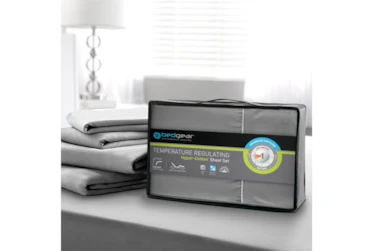
Sheet Set-Hyper Cotton Grey Full
$179Is Tempur-Pedic Worth It?
Tempur-Pedic is definitely worth the higher price tag. While slow recover foam is the common denominator, that’s not to say that Tempurpedic doesn’t bring its own unique engineering to bring out the best of viscoelastic, in a way that sets it apart from others.
What goes into the construction of Tempurpedic mattresses:
- Layers: Each Tempurpedic is built from layers. The typical Tempurpedic mattress will have two top layers of comfort foam, and two layers of special supportive cores underneath them.
- Breathability: As a leading mattress brand, Tempurpedic has spent decades perfecting the ‘breathablity’ of their mattresses. They do this with reactive open foam cells designed to ‘exhale’ humidity.
- Temperature regulation: You can’t talk about Tempurpedic without talking about temperature control. After all, it’s right there in the name: Tempur! To keep sleepers cool (read: not hot), Tempurpedic infuses layers with what is perhaps its most revolutionary technology: a cool-to-the-touch surface that works to maximize airflow through each layer.
Resistance for a Better Night’s Sleep
The key takeaway? The TEMPUR material found in every Tempur-Pedic memory foam mattress is slow-moving, so when your body comes into contact with it, your joints won’t “sink” into it as they would on other types of mattresses. The resistance put up by TEMPUR makes it good for helping to relieve pressure, while providing conforming comfort.
Is a Tempur-Pedic Firm Mattress Right for Me?
What Is a Firm Tempur-Pedic Mattress?
In other words, what exactly is that “TEMPUR” material everyone keeps talking about – and what do they mean by “firm”? Here’s a quick breakdown:
- The TEMPUR material: A memory foam technology that works to respond to your exact shape and movement while keeping you cool through the night.
- The firm comfort level: The highest level of firmness you can get; an extra-supportive feel for those who dislike “sinking” into their mattress.
Every Tempur-Pedic mattress is designed with layers of foam, each layer varying by intensity of support. While a plush mattress will feature a higher concentration of “comfort” foam layers (i.e., foam layers designed for a more forgiving feel), in a firm Tempur-Pedic mattress, the support layers outrank comfort layers for denser, firm-to-the-touch support.
What Are the Benefits of a Tempur-Pedic Firm Mattress?
Weary joints need to rest, too, and the responsive TEMPUR foam in a firm comfort level is designed to keep them fully supported so they can do just that. And as a result, getting a deeper, more rejuvenating night’s sleep suddenly becomes more attainable than ever.
Who Can Benefit Most from a Tempur-Pedic Firm Mattress?
It doesn’t get any more supportive than a Tempur-Pedic firm, which is great news for back and stomach sleepers, considering that of the three common sleeping positions, those are the two that tend to place the most amount of pressure on their backs – and for whom the support of a firm comfort level can be most beneficial.
What About a Plush Tempurpedic?
A Tempur-Pedic plush mattress brings a comfort level designed to target a specific way of sleeping. Learn if it’s right for you.
What Is a Tempur-Pedic Plush Mattress?
A Tempur-Pedic plush mattress combines responsive TEMPUR foam material with a plush comfort level. Here’s a breakdown on each:
- What is TEMPUR? TEMPUR foam is a type of memory foam developed to deliver support that “moves” with you, delivering targeted support to your highest pressure points and adapting to your precise position.
- What does “plush” mean? Tempur-Pedic mattresses come in three main comfort levels: firm, medium and plush. A plush comfort level is crafted with foam cells designed for the highest possible level of “softness.”
All of this is to say that lying down on a Tempur-Pedic plush mattress will feel like sinking into a layer of supportive memory foam cushioning.
Benefits of Tempur-Pedic Plush Mattresses
In a Tempur-Pedic plush mattress, the signature TEMPUR material combines with a plush comfort level to deliver an incredibly cozy, soft-to-the-touch feel. Here’s how it can impact the way you sleep:
- Responsive TEMPUR material adapts to your movement
- A supportive core of memory foam offers high pressure-relief
- A plush top layer conforms to your shape while delivering the softest possible comfort level
Deep sleep is the time when your muscles and joints get a chance to heal and rejuvenate, but if your mattress doesn’t offer the cushioning for proper pressure relief, this process gets inhibited. Choosing a mattress type and comfort level that will allow you to fully “sink” into it and de-stress – while still keeping you supported – is one of the best methods you can take to ensure a reparative, renewing slumber.
Best Type of Sleeper for a Tempur-Pedic Plush Mattress
Because they are designed for maximum pressure relief, Tempur-Pedic plush mattresses are best for those who sleep on their sides. (Of all the sleeping positions, sleeping on your side tends to place the most amount of pressure on the joints.)
And Finally...The Tempurpedic Medium Mattress
Tempur-Pedic medium mattress brings a comfort level designed to target a specific way of sleeping. Learn if it’s right for you.What Is a Medium Tempur-Pedic Mattress?
The TEMPUR memory foam material uses an adaptive foam cell technology that “remembers” your pressure points and conforms to your precise shape – all while working throughout the night to keep you cool. Combined with a medium comfort level (which makes your mattress feel neither “plush” nor “firm,” but something in between), TEMPUR foam creates the ultimate mattress type – one that is sure to keep even the fussiest of sleepers satisfied.
Benefits of a Tempur-Pedic Medium Mattress
The list of benefits of a Tempur-Pedic mattress can go on and on, but here are a few key takeaways of what exactly a medium Tempur-Pedic can do:
- TEMPUR material: Open-cell technology, contouring comfort and targeted pressure-relief keep you cool, relaxed and supported, respectively.
- Medium comfort level: Provides a safe alternative for those unsure about a plush or firm comfort level.
Best Type of Sleeper for a Tempur-Pedic Medium Mattress
Combining an equal amount of give and support, Tempur-Pedic medium mattresses offer the best of both worlds. Unlike the plush and firm comfort levels, which are designed for a specific type of sleeper, you really can’t go wrong with a medium mattress, no matter your preferred sleeping position.
Tempur-Pedic FAQs
Can You Flip a Tempur-Pedic Mattress?
Tempur-Pedic mattresses are not designed to be flipped. This is because of the foam layers – the top of the mattress is designed to contour to the body, while the bottom of the mattress isn't.
How Much Does a Tempur-Pedic Mattress Weigh?
Tempur-Pedic mattresses are heavy, which is a good thing. (A heavy mattress is more supportive.) The weight of each mattress depends on size and mattress type. In general, Eastern King and Cal King Tempur-Pedic mattresses are the heaviest, weighing around 120 pounds each. After that, the Queen Tempur-Pedic weighs around 95 pounds. Then, there's the Full and Twin, which weigh around 80 pounds and 60 pounds, respectively.
Should I Rotate My Tempur-Pedic Mattress?
You don't have to rotate a Tempur-Pedic mattress, since the foam is designed to constantly adapt and respond to your shape, even as the years go by. However, rotating a Tempur-Pedic mattress won't harm it and can only help it!
Do Tempur-Pedic Mattresses Wear Out?
Tempur-Pedic's unique blend of adaptive foam cells means that it won't wear out any time soon, given that you pair the mattress with a quality foundation and protector – and avoid eating and drinking in bed as much as possible.
Does a Tempur-Pedic Mattress Need a Box Spring?
A Tempur-Pedic mattress needs a solid base. As long as the foundation you use is solid (this can mean solid metal or solid wood) and not slatted, it will work with a Tempur-Pedic mattress.
How Often Should You Replace a Tempur-Pedic Mattress?
A Tempur-Pedic mattress can last around ten years, but that doesn't mean you have to replace it once the decade comes around! If it's not sagging anywhere and still feels supportive and comfortable, there's no need to exchange it for a new one.
Is Tempur-Pedic the Best Mattress?
Yes! (For quality, cooling tech and foam comfort, you won't find a better mattress than Tempur-Pedic!)

95% of Tempur-Pedic® owners would recommend their mattress.†
†Source: 2017 Tempur Sealy Brand Tracker
FREE Delivery and $300 Living Spaces Card
when you purchase a Tempur-Pedic® mattress. Terms & Conditions
Sleep Benefits
Tempur-Pedic® mattresses dramatically reduce motion transfer between you and your partner while adapting and conforming to your body’s unique needs throughout the night. So you fall asleep faster, stay asleep longer – and wake up feeling rejuvenated.
-
Good sleep has been shown to improve problem-solving skills and enhance memory performance of both children and adults.
HEALTHLINE.COM
-
Getting at least 8 hours of sleep can improve immune function and help fight the common cold.
HEALTHLINE.COM
-
A healthy dose of sleep can help you learn new skills, create long-term memories, and improve your focus.
SLEEP.ORG
-
According to an Oklahoma State University study, a new mattress provides significant improvements, including 70.8% in sleep comfort, 62.0% in sleep quality, 55.3% in back pain, and 50.7% in spine stiffness.*
The Better Sleep Council
-
Even a 10-minute nap can improve your alertness for 2.5 hours if you’re sleep-deprived, and you can feel the benefit for up to 4 hours if you are well-rested.
The Better Sleep Council

